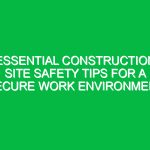
Single girder overhead cranes are widely used in industrial production due to their simple structure, ease of operation, and strong adaptability. Whether in factories, warehouses, or construction sites, they play a crucial role in enhancing material handling efficiency. However, efficient operation must always prioritize safety, particularly for cranes, which are responsible for heavy-duty material transportation. Therefore, the standardization of both operation and maintenance becomes critically important.
This article outlines the essential safety guidelines for operating and maintaining single girder overhead cranes, offering valuable insights into how operators and maintenance personnel can ensure safe crane usage.
Key Safety Points in Operation
1. Equipment Inspection and Preventive Maintenance
A thorough equipment check before use is the first step to ensure the safe operation of a crane. Operators should develop the habit of inspecting the equipment daily, focusing on the following areas:
- Wire Rope: Check the wire rope for wear, breakage, corrosion, or deformation. The wire rope is the key component in lifting heavy loads, and any damage can significantly increase the risk of accidents.
- Hooks and Lifting Devices: Ensure that the hook is free from cracks and deformation, and that lifting devices are securely connected. The safety latch on the hook should also be in good condition to prevent unintended load release.
- Electrical Equipment: Keep the motor, control panel, and limit switches dry, with wires showing no signs of damage or aging, to avoid malfunction caused by short circuits or electrical failures.
- Brakes and Limiters: Make sure the brakes and limiters function properly, ensuring that they can control the crane’s starting, stopping, and load limits effectively.
2. Proper Operation and Training
To ensure safe crane operation, operators must receive professional training and strictly follow the operating procedures. Key operation guidelines include:
- Load Requirements: Do not exceed the crane’s rated load capacity. Each lift should stay within the crane’s maximum rated load to avoid overloading, which can place excessive strain on the crane and lead to equipment failure or severe accidents.
- Smooth Lifting and Lowering: Avoid sudden lifting or lowering of loads, and keep them balanced during transport. Sudden movements can cause the load to swing uncontrollably, increasing the risk of loss of control.
- Operating Environment: Ensure that the operating area is free from obstacles and that no unauthorized personnel are present in the working zone. This reduces the risk of collision or injury during operation.
- Emergency Stop Procedure: In the event of an abnormal situation or accident warning, immediately press the emergency stop button to prevent the situation from escalating.
3. Personnel Safety Precautions
Both operators and support staff must adhere to the following safety precautions:
- Personal Protective Equipment (PPE): Operators should wear appropriate safety gear, such as helmets, safety shoes, and gloves, to prevent injury while operating the crane.
- Maintain a Safe Distance: Unrelated personnel should stay clear of the operation area. Operators must ensure that the surrounding zone is secure, particularly when handling large workpieces, to allow ample working space.
- Communication Signals: In large or noisy work areas, operators and signalers should use standard communication signals or walkie-talkies to avoid miscommunication and ensure smooth coordination.
Key Safety Points in Maintenance
1. Regular Maintenance Schedule
The maintenance and care of a crane directly impact its service life and operational safety. A regular maintenance schedule is fundamental for ensuring the equipment’s safety. Maintenance should include the following:
- Lubrication System: Movable parts of the crane, such as pulleys, bearings, and gears, should be regularly lubricated to reduce friction and wear, preventing component failure due to excessive wear and tear.
- Tightening Bolts: Regularly check all bolts and fasteners, ensuring they are tight and secure. This is particularly important for cranes used in high-frequency or vibration-prone environments, where loosening can occur.
- Brake System Inspection: The brake system is crucial to the safe operation of a crane. Regularly check the brake pads for wear and replace them as needed to maintain optimal performance.
- Electrical System Maintenance: Regularly inspect electrical wiring and motors for signs of aging, short circuits, or other problems. Ensure that the equipment is in good working order to avoid potential electrical malfunctions.
2. Inspection and Replacement of Key Components
Certain components of a single girder overhead crane wear out over time and require regular inspection and replacement.
- Wire Ropes and Pulleys: The wire ropes and pulleys are critical components that bear the weight of loads during crane operations. If any signs of wear or breakage appear in the wire rope, it must be replaced immediately. Pulleys should also be regularly checked for wear.
- Crane Beam Structure: The beam of the single girder crane undergoes constant pressure and friction, so it is essential to check for any cracks or deformations in the beam structure to ensure its integrity.
- Motor and Gearbox: Inspect the motor and gearbox for unusual noises or overheating. Address any issues promptly to ensure the system can continue delivering reliable power.
3. Involvement of Professional Maintenance Personnel
While operators can handle basic equipment checks, more complex maintenance tasks should be carried out by professional technicians. This is especially important for components like electrical systems and hydraulic systems, which require higher levels of expertise. Professional personnel can offer deeper insights into the equipment’s condition and provide necessary recommendations for advanced maintenance.
Common Safety Issues and Solutions
1. Overloading
In practice, some operators might attempt to overload the crane to save time, which is an extremely dangerous behavior. Overloading causes excessive stress on the crane, increasing the risk of equipment failure and accidents. Cranes should be equipped with overload protection devices that automatically stop lifting when the load exceeds the crane’s rated capacity and alert the operator.
2. Environmental Factors
Environmental conditions such as wind speed, temperature, and humidity can all affect the safe operation of cranes. Operating a crane in strong winds may cause the load to swing, increasing the difficulty and risk of operation. In extreme cold or hot conditions, the metal components of the crane may also experience performance degradation, requiring additional protective measures.
3. Human Error
Human error is another common cause of crane accidents. To minimize this risk, companies should enhance operator training and assessment, ensuring that all personnel possess proficient skills and a strong awareness of safety practices.
Conclusion
The safe operation of a single girder overhead crane relies not only on the quality of the equipment but also on the close collaboration between operators and maintenance personnel. By establishing detailed operating procedures, strengthening daily inspections and maintenance, and improving safety awareness among staff, companies can effectively reduce operational hazards and ensure a safer work environment.
When using a single girder overhead crane, safety management must be a top priority. Preventive measures and routine maintenance are key to ensuring that each task is completed smoothly and without unnecessary risk or accidents.


